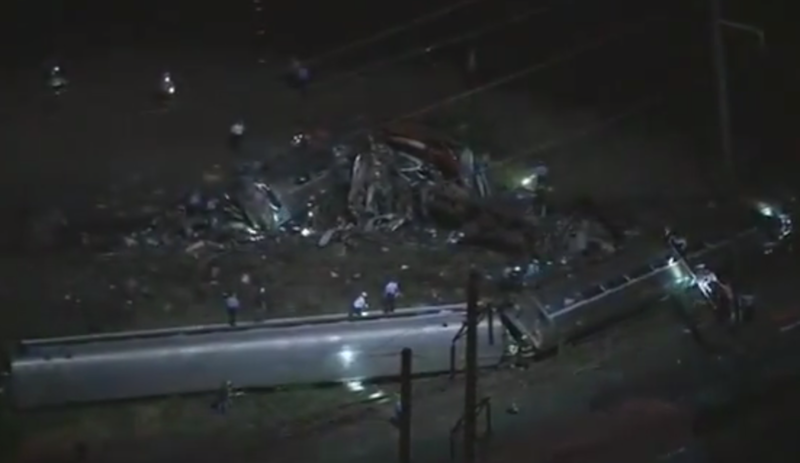Amtrak Derailment: How Technology Is Aiding Crash Investigation

A range of technologies, from 3D laser scans of train cars to video and data recordings, is aiding an investigation into the cause of a devastating Amtrak train derailment that occurred in Philadelphia earlier this week.
The National Transportation Safety Board (NTSB) is investigating the accident, which killed eight people and injured more than 200 others, according to news reports.
An initial investigation suggests speed may have been a factor in the train's crash. The maximum speed on the curve where the train derailed is 50 mph (80 km/h). The NTSB was able to use video from the train's track-image recorder to reconstruct a timeline of the train's speed. [How Safe Is Train Travel?]
Video/data recordings
At 65 seconds before the end of the video, the train's speed went above 70 mph (113 km/h). At 43 seconds before the video ends, the speed went above 80 mph (129 km/h); at 31 seconds before, it reached 90 mph (145 km/h), and at 16 seconds before, the speed topped 100 mph (161 km/h), the video showed. The train engineer, Brandon Bostian, applied the brakes just before the train entered a curve. A few seconds into the turn, the train appeared to tilt 10 degrees to the right, then the recording went blank, NTSB spokesman Robert Sumwalt said in a news briefing yesterday (May 14).
It's not clear whether Bostian increased the train's speed, or whether the speed increased automatically, Sumwalt said. As part of his or her qualification, a train engineer must learn the permanent speed restrictions along a particular route, although there are no speed-limit signs along the track, except for temporary speed restrictions, Sumwalt said.
The train's "black box" recorders have also been recovered, and the data is being analyzed.
Sign up for the Live Science daily newsletter now
Get the world’s most fascinating discoveries delivered straight to your inbox.
Train and track inspections
The NTSB has been reviewing train and track inspections for any signs of faulty function. Officials examined the train's pre-departure inspection, which includes a check of the train's brakes, but no anomalies were found, Sumwalt said. The day before the accident, a vehicle inspected the condition of the track, known as track geometry, and found no problems.
The NTSB has conducted 3D laser scans of the first two train cars — the business class car and the "quiet" car — which suffered the most damage in the crash, Sumwalt said. He added that the agency has also tested most of the train signals along the route, except for the ones closest to the site of the derailment, which will be tested today. The agency has found no abnormalities with the signals so far.
In the next week, after the track near the crash site has been repaired, officials will conduct a so-called site distance test with a train under similar lighting and weather conditions, to determine how far away from the curve the train was when the engineer could first see it, Sumwalt said. [Top 10 Leading Causes of Death]
Preventative tech
Experts have pointed out that a technology for monitoring and controlling a train's movements, known as positive train control (PTC), could have prevented Tuesday's deadly derailment. One of the tech's primary functions is to prevent derailments due to speeding.
"I can confidently say that an operational positive train control system would have prevented this accident," Sumwalt told reporters.
In 1990, the NTSB listed PTC on its list of "most wanted" transportation safety improvements, as many accidents were caused by human error. In 2008, Congress passed a law requiring the installation of PTC technology throughout most of the U.S. railroad network by December 15, 2015. Although the technology has been installed in much of the northeast corridor, it was not installed on the section of track where the Philadelphia train crashed, Sumwalt said.
One of the oldest safety features of trains is the so-called "dead man's switch," a control (such as a foot petal) that is activated automatically to stop the vehicle if the human operator loses control, such as in the event of death or loss of consciousness.
Today, most trains no longer have a dead man's switch, but instead have something called an alerter, Sumwalt said. If a train engineer has not adjusted the train's controls for a certain amount of time, the alerter will sound an audio and visual message. If the engineer doesn't push a button to disable the message, the train will automatically apply the penalty brake. Unfortunately, some engineers have learned to ignore these alerts, Sumwalt said.
Follow Tanya Lewis on Twitter. Follow us @livescience, Facebook & Google+. Original article on Live Science.











